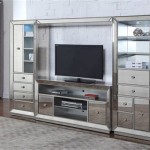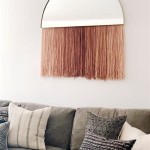Understanding and Preventing Fog on Bathroom Mirrors
Bathroom mirrors, frequently exposed to high humidity and temperature fluctuations, are prone to fogging. This phenomenon occurs when warm, moist air comes into contact with the cooler surface of the mirror, causing water vapor to condense into tiny droplets. These droplets scatter light, obscuring the reflected image. Clear visibility is essential in bathrooms for grooming, hygiene, and applying makeup. Therefore, understanding the causes of mirror fogging and implementing effective prevention and cleaning strategies are crucial.
Several factors contribute to the severity and persistence of mirror fog. The temperature difference between the air and the mirror surface is a primary driver. A larger difference results in more condensation. The humidity level in the bathroom also plays a significant role. Bathrooms with poor ventilation or inadequate exhaust fans will trap moisture, exacerbating the fogging issue. The surface properties of the mirror itself can also influence fogging. Mirrors with imperfections or residues may attract and retain more moisture.
Maintaining a clear, fog-free mirror involves a combination of preventative measures and effective cleaning techniques. This article will explore various strategies to combat mirror fog, encompassing both short-term solutions and longer-lasting methods.
Improving Bathroom Ventilation to Reduce Humidity
The most effective long-term solution to mirror fogging is addressing the root cause: excessive humidity. Proper ventilation is paramount in reducing humidity levels within the bathroom. This section details strategies to improve airflow and minimize moisture buildup.
The primary method of bathroom ventilation is the exhaust fan. It is essential to ensure the exhaust fan is adequately sized for the bathroom's square footage. Building codes often specify minimum airflow requirements, typically measured in cubic feet per minute (CFM). A fan that is too small will be ineffective at removing moisture-laden air. To calculate the necessary CFM, a general rule of thumb is 1 CFM per square foot of bathroom space. For bathrooms with high ceilings or frequent, long showers, a larger fan may be necessary.
In addition to adequate size, regular maintenance of the exhaust fan is crucial. Dust and debris can accumulate on the fan blades and motor, reducing its efficiency. Cleaning the fan at least twice a year will ensure optimal performance. This involves turning off the power to the fan, removing the cover, and carefully cleaning the blades and housing with a brush or vacuum cleaner attachment. When cleaning, care should be taken to avoid damaging the sensitive electrical components.
Beyond the exhaust fan, other ventilation strategies can be employed. Opening a window during and after showering can help to release moisture. If a window is not available, leaving the bathroom door slightly ajar can improve airflow and prevent moisture from becoming trapped within the room. These passive ventilation methods, when combined with a properly functioning exhaust fan, can significantly reduce humidity levels and minimize mirror fogging.
Dehumidifiers can also be used, especially in bathrooms without windows and where installing a more powerful exhaust fan is not possible. While a portable dehumidifier requires more maintenance, they can bring rapid improvements to humidity. Ensure a proper drainage solution is present near the dehumidifier.
Cleaning Agents and Solutions for Fog Prevention
Utilizing specific cleaning agents and solutions can significantly reduce mirror fogging. These products work by creating a barrier on the mirror surface that prevents water droplets from forming or encourages them to spread into a thin, transparent film. This section outlines various cleaning solutions and their application methods.
Commercial anti-fog sprays are readily available and offer a convenient solution. These sprays typically contain surfactants that reduce the surface tension of water, preventing droplets from beading up. To apply, spray the product evenly onto the mirror surface and wipe it clean with a microfiber cloth. It is important to follow the manufacturer's instructions carefully and avoid oversaturating the mirror, as this can leave streaks or residue. The effectiveness of anti-fog sprays varies, so it may be necessary to experiment with different brands to find one that provides optimal results.
Homemade anti-fog solutions can be equally effective and often more economical. A mixture of white vinegar and water in a 1:1 ratio can be used as a simple and effective anti-fog cleaner. The vinegar helps to remove soap scum and other residues while also creating a temporary barrier against condensation. Apply the solution to the mirror and wipe it clean with a microfiber cloth.
Another popular homemade solution involves dish soap. A small amount of dish soap can be diluted in water to create a mild anti-fog cleaner. Apply the solution to the mirror, spread evenly, and wipe it dry with a clean, dry microfiber cloth. Ensure only a small amount of dish soap is used, or the solution may leave a hazy residue. The key is to leave behind an ultra-thin layer of soap, almost imperceptible, that prevents water droplets from forming.
Shaving cream can also be used as an anti-fog treatment. Apply a thin layer of shaving cream to the mirror, let it sit for a few minutes, then wipe it clean with a damp cloth followed by a dry microfiber cloth. This method leaves a protective film that prevents fogging for a period of time. Ensure all the shaving cream is effectively removed to prevent any remaining residue.
Glycerin is another solution, and can be combined with rubbing alcohol and water. The rubbing alcohol is used to help the glycerin spread more evenly, and reduce streaking. Apply the solution similarly to that of shaving cream, and then wipe off with a microfiber cloth.
For optimal results, the mirror should be thoroughly cleaned before applying any anti-fog solution. This removes dirt, soap scum, and other residues that can interfere with the effectiveness of the treatment. Microfiber cloths are recommended for cleaning mirrors as they are lint-free and provide a streak-free finish.
Alternative Methods and Technologies for Fog Elimination
In addition to ventilation and cleaning solutions, several alternative methods and technologies are available to prevent or eliminate mirror fog. These options range from simple DIY solutions to more sophisticated heating systems.
Applying rain repellent products, typically used on car windshields, can also prevent fogging. These products create a hydrophobic surface that repels water, preventing droplets from clinging to the mirror. Apply the repellent according to the manufacturer's instructions and buff it to a clear finish. While effective, these products may require more frequent reapplication compared to other anti-fog solutions.
Electric defogger pads are heating elements that attach to the back of the mirror and gently warm the glass. This prevents condensation by maintaining the mirror's temperature above the dew point. These pads are relatively easy to install and can be wired to the bathroom's lighting circuit, so they activate automatically when the lights are turned on. Defogger pads provide a consistent and reliable solution for fog prevention, particularly in high-humidity bathrooms.
Heated mirrors are another option for preventing fog. These mirrors incorporate a built-in heating element that keeps the mirror surface warm. Heated mirrors are typically more expensive than defogger pads but offer a more integrated and aesthetically pleasing solution. They are available in various sizes and styles to suit different bathroom designs.
Another low-tech solution involves strategically placing a small fan near the mirror to circulate air and prevent condensation. This can be achieved with a small desk fan or a clip-on fan that attaches to a shelf or fixture. While this method is not as effective as ventilation or anti-fog solutions, it can provide some relief in less humid environments.
Finally, ensuring consistent temperature can reduce fog. If the tap can be turned on and left running on lukewarm water until the mirror warms up, the mirror will be much less prone to fogging. Ensure that the tap is not left running unattended, and that the water use is kept to a minimum to not waste water.

Rain X Bathroom Mirror Anti Fog

How To Remove Mist From Foggy Bathroom Mirrors Basin

Cpid

How Can A Fogless Mirror Improve Your Shower Experience

Magnifying Mirror Fogless Cleaning Solution

5 Simple Ways To Keep Your Bathroom Mirror From Fogging Up Housekeeping Wonderhowto

Dental Equipment Medical Device Stainless Steel Self Cleaning System Water Proof Antifog Machine Mouth Mirror China Waterproof Made In Com

Glass Anti Fog Agent Car Front Windshield Spray Rearview Mirror Easily Spraying And Wiping Against Blur Sight Temu

Clean Defog Your Bathroom Mirror

Bathroom Fogless Mirror Punch Free Razors Holder Cup Stable Powerful Suction Make Up Ca








